
Gary's History
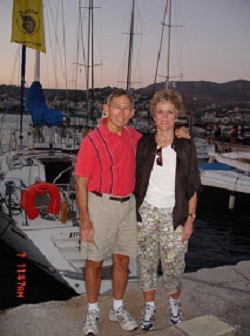 Gary Matthes was born October 21, 1941 in St. Louis, MO and was raised in a suburb of St. Louis called Jennings. He attended Fairview Elementary and High School, graduating first in his class in June 1959. He entered Washington University in St. Louis, majoring in physics. Concurrently, he applied for an appointment to the Air Force Academy, primarily for financial reasons as continuation at Washington University was doubtful, even with a half tuition scholarship. Gary received an appointment as the third alternate from Senator Thomas C. Hennings. When the primary and alternate candidates declined the appointment, Gary was offered the opportunity, seven days prior to the reporting date. He entered the Academy with the Class of 1964 on 20 June 1960, graduating on 3 June 1964.
Gary Matthes was born October 21, 1941 in St. Louis, MO and was raised in a suburb of St. Louis called Jennings. He attended Fairview Elementary and High School, graduating first in his class in June 1959. He entered Washington University in St. Louis, majoring in physics. Concurrently, he applied for an appointment to the Air Force Academy, primarily for financial reasons as continuation at Washington University was doubtful, even with a half tuition scholarship. Gary received an appointment as the third alternate from Senator Thomas C. Hennings. When the primary and alternate candidates declined the appointment, Gary was offered the opportunity, seven days prior to the reporting date. He entered the Academy with the Class of 1964 on 20 June 1960, graduating on 3 June 1964.
Immediately following graduation, Gary joined a group of 12 other members of his class in an accelerated Master of Astronautics course at Purdue University. He graduated in February, 1965 and entered Undergraduate Pilot Training at Vance AFB, OK in March of that year. After earning his wings, Gary was assigned to fly the RF-4C tactical reconnaissance aircraft, first at Mountain Home AFB, ID and then at Tan Son Nhut AB, Republic of Vietnam. From November 1966 to September 1967, Gary flew 101 sorties over North Vietnam and 124 sorties over South Vietnam and Laos.
Returning from Vietnam, Gary joined the 319th Fighter Interceptor Squadron, flying the F-104A. Upon deactivation of the squadron, he became a T-38 instructor pilot at Laughlin AFB in Del Rio, TX. While there, he was selected for attendance at the USAF Test Pilot School at Edwards AFB, CA, entering in July 1972. After graduation, he remained at Edwards in fighter test and found his passion in life, flight test. Initially, he flew test and test support missions in the U-2A/C/D, A-7D, various models of the F-4 and the T-38. Early in 1975, he was selected as a member of the team to evaluate the two candidate radars for the F-16. After attending Armed Forces Staff College in 1976, he returned to Edwards AFB as the primary avionics test pilot and operations officer for the F-16 Joint Test Force. As a member of the test team, Gary flew missions in all phases of the F-16 flight test program. He was the primary pilot on the Engine Out Test Program and has the distinction of being the first pilot to land the “electric jet” with the engine off and only the Emergency Power Unit supplying electrical and hydraulic power.
During his first tour at Edwards, he met Penny who in 1978, during his second tour, became his wife. In 1979, their only child, Christine, was born.
Twice during his time at Edwards he was chosen by the Air Force to interview with NASA for the Space Shuttle Program. Although becoming an astronaut had been a goal he set for himself after graduating from the Academy, looking back he has never regretted not being selected.
Gary went operational with the F-16 in 1980, first as an instructor pilot at MacDill AFB, FL and then at Kunsan AB, Republic of Korea. Upon returning to the states, he was assigned initially as the operations officer at the USAF Test Pilot School and subsequently was chosen as the Director of the Low Altitude Navigation and Targeting Infra-Red for Night (LANTIRN) Test Force.
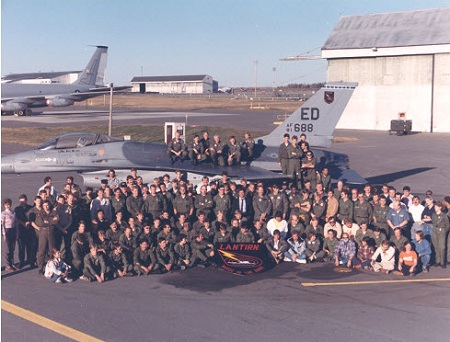
Upon his promotion to colonel, he was named Director of Test Forces and, later, Vice Wing Commander of the 6510th Test Wing.
In the spring of 1988, Gary entered training to become the Air Attaché to Greece, arriving in Athens in August of 1989. While in Greece, Gary flew the C-12 and various Hellenic Air Force aircraft. During his three year assignment, the world changed considerably. The Soviet Union ceased to exist; the Berlin Wall came down; and the US and its coalition partners drove the Iraqi forces from Kuwait. Being stationed in Athens during these upheavals made for an exciting assignment. With the breakup of the Soviet Union, several new republics emerged and the US was interested in establishing a diplomatic presence in each one. Gary supported a US State Department trip to several of these new countries across the southern section of the former Soviet Union. The purpose was to buy or rent buildings for consulates and embassies in countries from Armenia to Kyrgyzstan.
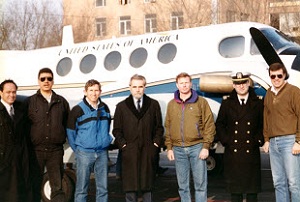
Back in Athens, dealing with Soviet and Eastern Block attachés as they tried to find their place in this new world was interesting. During the Gulf War, Gary worked directly with the Chief of the Hellenic Air Force and his senior staff for overflight privileges and basing rights for our combat and combat support aircraft. Because of the outstanding support of the Greek government to the war effort, President Bush made a state visit to Greece. The Defense Attaché Office directly supported this visit. During this time Gary was the acting Defense Attaché. Gary retired from the Air Force in August 1992, choosing to return to Edwards for the ceremony. Flying airplanes had always been at the center of Gary's career. He was fortunate enough to maintain flying currency, once he was awarded his wings, throughout the rest of his career except during Armed Forces Staff College and attaché training. He still flies today, albeit in a slower and much less complex airplane.
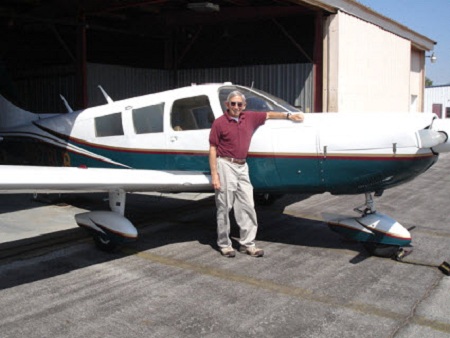
Six months after retiring from the Air Force, Gary joined the Lockheed Fort Worth Company, eventually the Lockheed Martin Aeronautics Company, as a project manager on the Greek F-16 Program, managing aircraft retrofits and new production. Later he moved to managing programs for the USAF on the F-16. Gary retired from Lockheed Martin at the end of 2006.
Early in 2001, Penny's sister died of breast cancer and her husband was killed in an aircraft accident. These tragic deaths occurred only 36 days apart. Penny and Gary “adopted” their 20 year old niece, Katie, and 16 year old nephew, Michael, into their family.
The years at the Academy taught Gary the importance of balancing all aspects of life. Gary's family has been his anchor regardless of the problems that life has brought. Spiritually, he has placed his faith in the God that has always seen him through situations that could have and perhaps should have ended in disaster. Gary has worked hard, but he has also learned that to do your best on the job, one must enjoy life away from the job. For him, one of his primary sources of enjoyment has come from sailing with family and friends and flying. Finally, the Academy emphasized the need for exercise to maintain good health so that life could be lived to the fullest. Gary has maintained a regimen of exercise centered on handball, a game he still plays at a fairly competitive level.
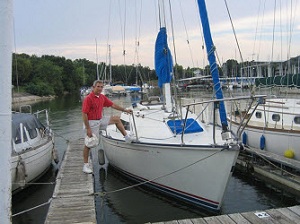
Gone But Not Forgotten [ Home ] [ Table Of Contents ]